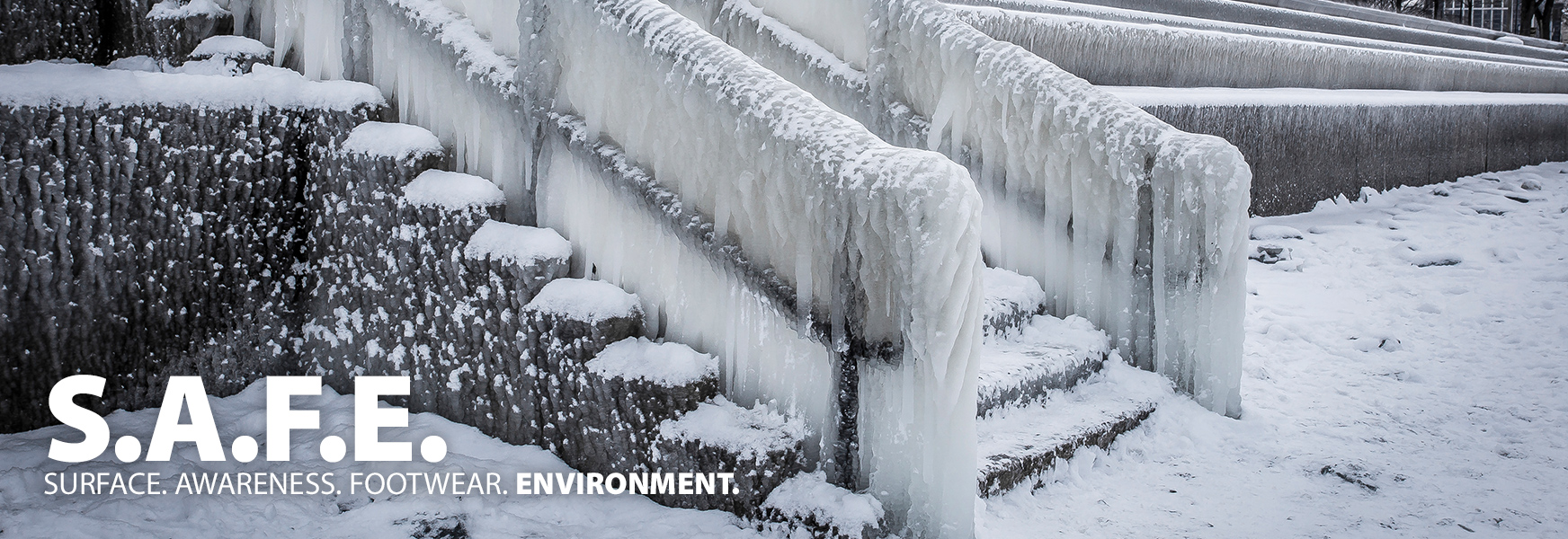Slip and Fall Prevention - The S.A.F.E. Way (Part 5)

Surface, Awareness, Footwear, ENVIRONMENT
Environment comprises the design and layout (permanent and non-permanent features) of your facility as well as changing weather conditions around it.
Sometimes the facility itself can pose a slip or trip hazard. Ramps, stairs, elevation changes between building sections, lighting, repurposed spaces, cabling, narrow walkways, and lack of storage can conspire to create a slip/trip hazard.
Though major facility changes might be the best way to eliminate these hazards, there are things that can be done to reduce the potential for slip/trip and falls.
- Clear and mark designated walkways and require them to be kept that way.
- Assess lighting conditions; increase lumens or the number of fixtures to increase visibility.
- Mark thresholds, top and bottom stair treads, or elevation changes with a contrasting or high visibility color.
- Develop alternate plans should walkways become temporarily congested by material or made unsafe by inclement weather.
- Provide temporary or personal lighting (headlamps) for staff working in dark areas where a permanent lighting solution is not an option.
- Obstructions such as broken concrete sections in the walkways must be eliminated or at least identified by using high contrast colors, signage, or even caution tape.
As Mark Twain once said, “It is best to read the weather forecast before we pray for rain.” Weather can’t be changed. But it can be predicted and reacted to with good maintenance procedures, awareness tools, preparing the space, and changing your pace of work during inclement weather.
Consider the following:
- Use and maintain matting at your entrances to help trap outside contaminates.
- Keep maintenance tools such as shovels and sand or salt in accessible areas.
- Post signs when necessary to alert inside staff of changing weather conditions.
- Slow your pace and “walk like a penguin” when the environment makes the work surface slippery.
Making your workplaces safer by preventing slips and falls is the right thing to do for your organization and your employees. These incidents are painful, expensive, and almost all preventable. To get started use the MEMIC Scoring Your Flooring worksheet and other resources available to MEMIC customers on the MEMIC Safety Director. Share this Safety Net series with everyone, make improvements in your infrastructure and safety policies, and increase employee awareness of slip and fall hazards.

